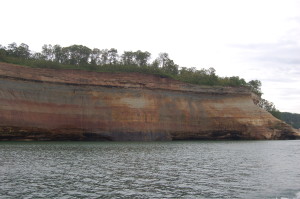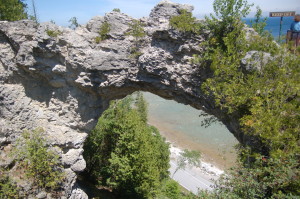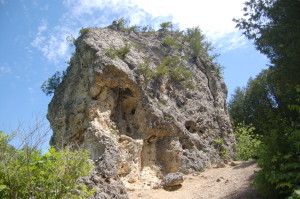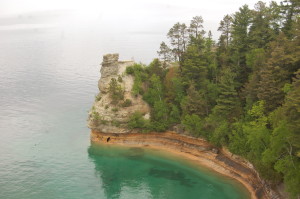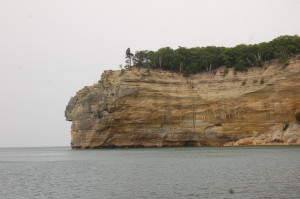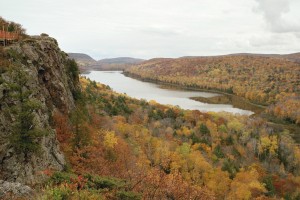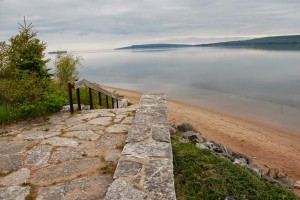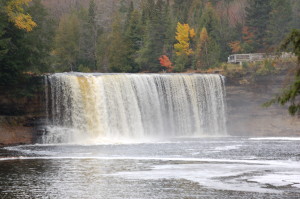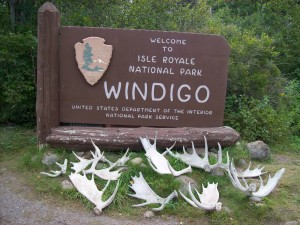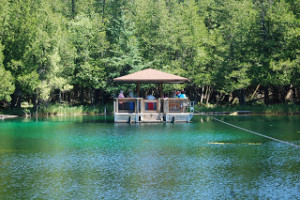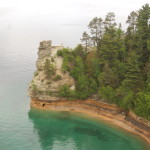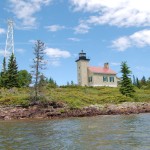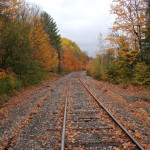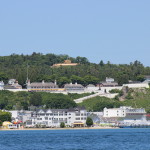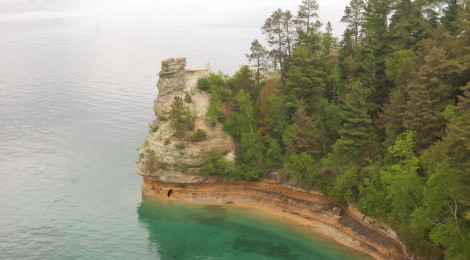
7 Natural Wonders of Michigan: Upper Peninsula
Michigan’s Upper Peninsula is home to some of the most beautiful scenery in the entire Midwest, which makes it a prime destination for family vacations away from the busier cities in the Lower Peninsula. Lake Superior provides mile after mile of scenic shoreline, and has helped produce some breathtaking landmarks over the years. Mountains, waterfalls, unique geological formations and more can be found in “God’s Country” north of the bridge, and we’ve decided to narrow things down to our favorite “7 Natural Wonders of Michigan” for the U.P. – we hope you enjoy the list below and consider visiting them soon!
Arch Rock/Sugar Loaf – Mackinac Island: The lack of motor vehicles and an abundance of historic sites are two of the things that draw visitors to Mackinac Island each year, but the area is also home to a handful of unique geological formations. This natural limestone arch was formed during a postglacial period, when the waters of Lake Huron were much higher. Paved roads lead back to this rare formation that stands nearly 150 feet above the shoreline, providing access for foot and bicycle traffic as well as horse-drawn carriages. The Sugar Loaf is a limestone breccia stack created by erosion in a postglacial period, and it stands 75 feet tall. Great views of this formation can be found at Point Lookout, or up close from Sugar Loaf Rd.
Pictured Rocks cliffs/Miners Castle: Few places in Michigan can match the natural beauty of the Pictured Rocks National Lakeshore, where towering cliffs, abundant waterfalls, and geological formations like Miners Castle draw visitors by the thousands each summer. Many of the geological formations – arches, stacks and the cliffs (and Indian Head, seen above) – are best seen from a boat cruise that follows the shoreline, while most of the area’s waterfalls and the popular Miners Castle formation can be reached by short hikes on the mainland. The National Lakeshore boasts 42 miles of shoreline, and more than 73,000 total acres. It is also an incredibly popular spot for kayakers, who can get up close to the colorful sandstone cliffs and even check out the sea caves that have been formed by the mighty waters of Lake Superior. Enjoy our photo gallery of Pictured Rocks here.
Porcupine Mountains/Lake of the Clouds: Michigan’s Porcupine Mountains Wilderness State Park was recently the 2nd place finisher in a USA Today/10best.com poll of the best state parks in the country, and with more than 60,000 acres it is also the largest in the state. The largest stand of old growth hardwood forest and a unique basalt and conglomerate rock escarpment are major draws to the area, where stunning views of Lake of the Clouds and Summit Peak can be had from the mountaintops. Waterfalls are abundant in the park, and there are more than 80 miles of hiking trails. Wildlife in the park includes bald eagles, black bears, lynx, wolves, coyotes, moose, deer, foxes, beavers, otters and of course porcupines. Check out our photo gallery of the park here.
Lake Superior: The world’s largest freshwater lake (by surface area) plays a huge role in nearly every aspect of life in the Upper Peninsula, as it affects weather, travel, industry, and recreational opportunities. Its mighty waters meet up with many of the other attractions on this list, as it rests below the Porcupine Mountains as well as the sandstone cliffs of the Pictured Rocks National Lakeshore, and it surrounds Isle Royale on all sides. Access is easy and abundant, and while the water here is much colder than Lake Michigan and Lake Huron in the Lower Peninsula, there are still a great beaches for swimming when the time and temperature are right.
Tahquamenon Falls: The second-largest state park in Michigan is centered around the stunning waterfalls on the Tahquamenon River. The Upper Falls are one of the largest waterfalls east of the Mississippi, as the 200-foot-wide river drops nearly 50 feet here. This is one of the most-photographed sites in the entire state, as the waterfall gets a copper color from tannins in the cedar swamps that drain into the river, making for stunning pictures in any season. The Lower Falls are a set of five drops downstream that surround an island that can be reached by rowboat. The entire park encompasses more than 46,000 acres and includes many miles of hiking trails, several campgrounds, and even a restaurant/brewpub. Check out our photo gallery of the park here.
Isle Royale: This island northwest of the Keweenaw Peninsula is the largest in Lake Superior, the second-largest in the Great Lakes, and the third-largest in the contiguous United States. Only foot traffic is allowed on the island, where visitors are treated to excellent opportunities for hiking, camping, fishing and boating. The island is also the site of one of the longest studies of a predator-prey relationship, as the moose and wolf populations have had very limited outside influence over the years and operate in a cyclical fashion. Natural features of the island include numerous inland lakes, Mount Desor, and a lengthy greenstone ridge. Visitors can enjoy more than 170 miles of hiking trails through the wilderness, and the fact that Isle Royale can only be reached by ferry from Michigan or Minnesota keeps visitor numbers lower than that of the national parks on the mainland.
Kitch-iti-kipi Big Spring: One of the biggest attractions in the Manistique, MI area of the Upper Peninsula is Kitch-iti-kipi, also known as the Big Spring. Located inside Palms Book State Park, the spring features clear water that is always 45 degrees and constantly fed 10,000 gallons per minute from fissures in the limestone below the pool. An aquifer also connects to nearby Indian Lake. The pool is 40 feet deep and so clear that it is easy to see fish as well as the branches of trees growing along its edges. A self-operated wooden raft pulls visitors out into the pool so they can see it up close, from either over the sides or through the viewing windows in the bottom.

